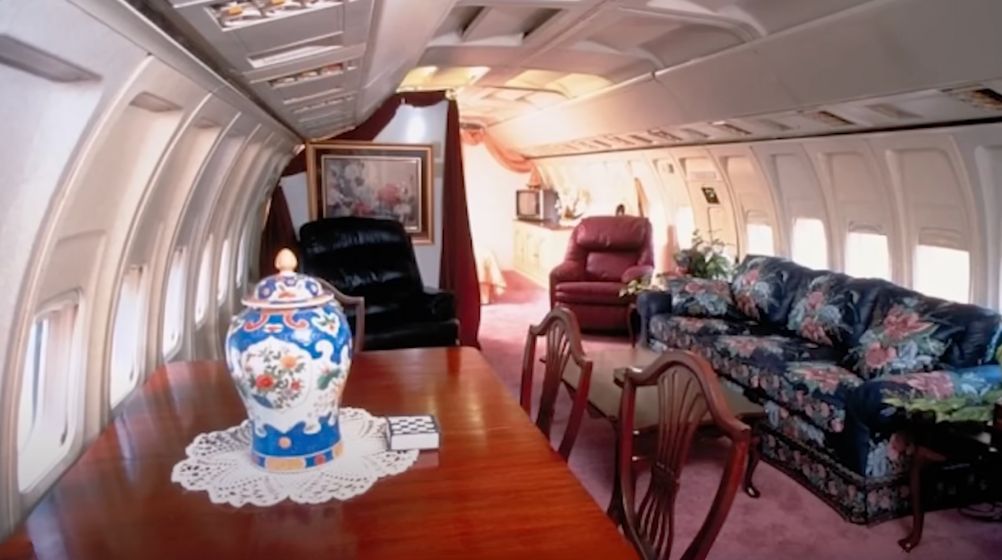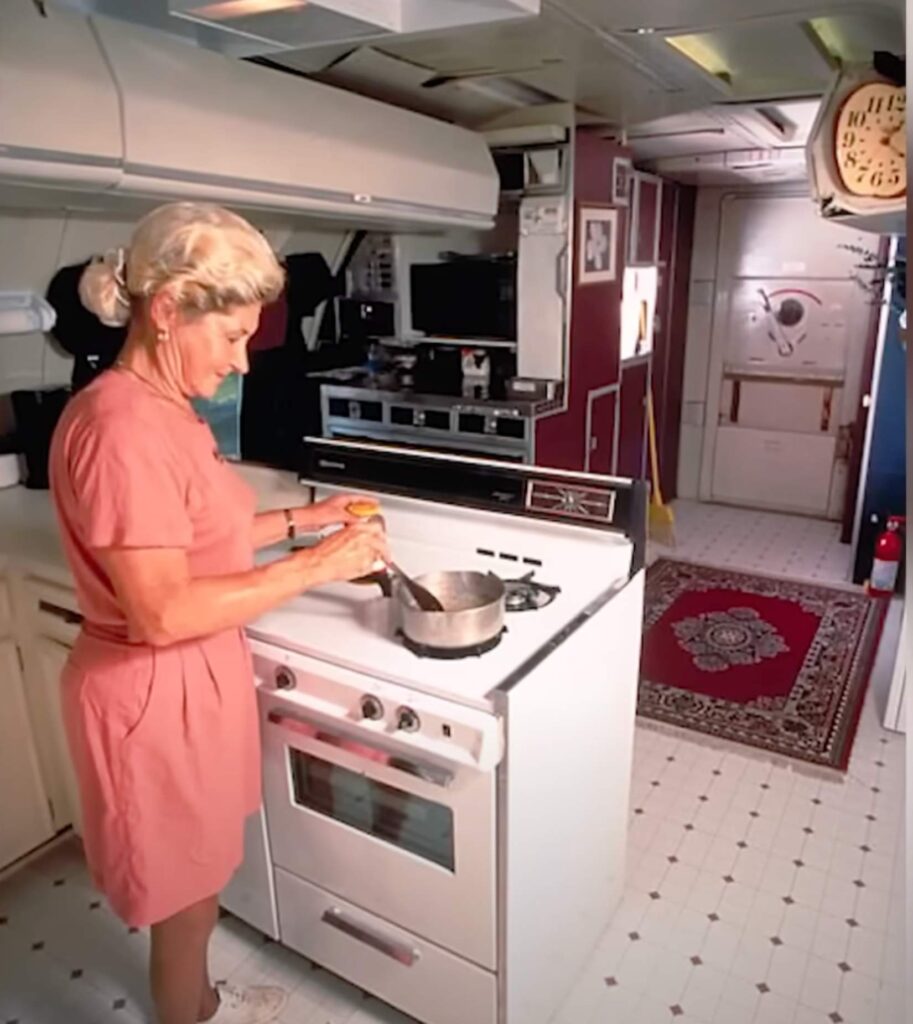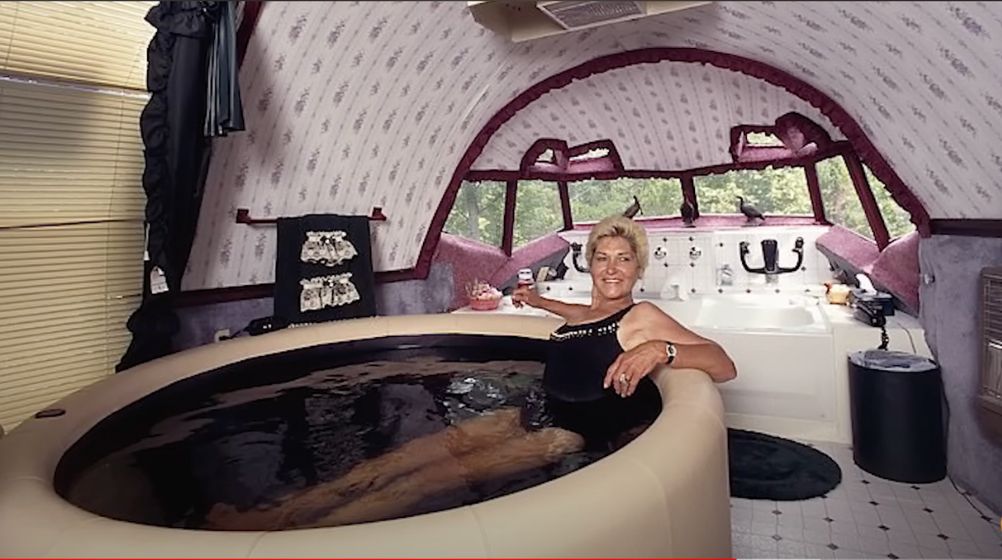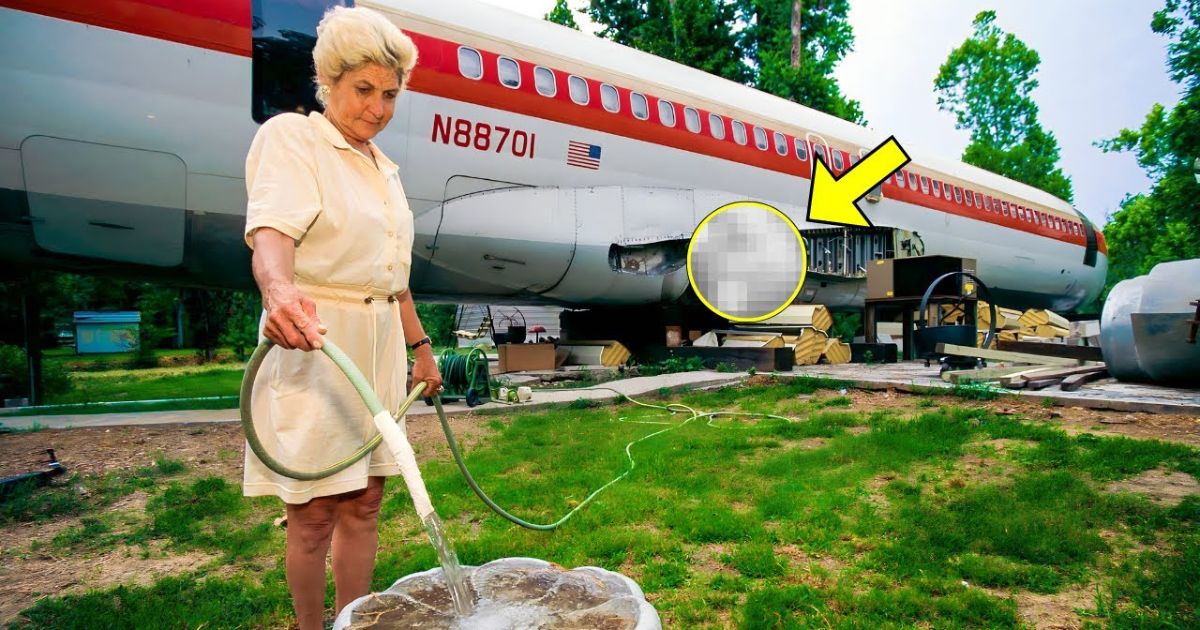In the realm of unconventional living spaces, Jo Ann Ussery’s transformation of a Boeing 727 into a luxurious home stands out as a beacon of creativity and resilience.
A Twist of Fate: The Origin of an Idea

In 1993, Jo Ann Ussery faced a significant life challenge. After her house in Benoit, Mississippi, was destroyed, she found herself a widow with two children to care for. Financial constraints made traditional housing options unfeasible. It was during this period of uncertainty that her brother-in-law, Bob, an air traffic controller, proposed a novel solution: converting an airplane into a home.
Acquiring “Little Trump”
The idea took root when Ussery was introduced to a decommissioned Boeing 727. The aircraft, which she would affectionately name “Little Trump” after Donald Trump’s private jet, was purchased for a mere $2,000, including the cost of transportation. This unconventional choice marked the beginning of a unique journey into adaptive reuse in architecture.

Engineering a Home
Jo Ann Ussery’s vision was grand: to create a spacious and comfortable living area within the confines of the retired aircraft. The Boeing, featuring 1,500 square feet of interior space and lined with 76 windows, provided a bright and airy environment. To make the aircraft suitable for residential living, Ussery invested under $30,000—around $60,000 in today’s dollars—into renovations.
The airplane was strategically placed on her property, its nose pointing towards a scenic lake, while the tail was stabilized with concrete. This ensured the plane remained secure and stable on the ground.
Interior Design
Transforming the Boeing’s cabin involved extensive modifications. Ussery insulated the walls, installed new flooring, and adapted the onboard systems to support residential utilities. The existing air conditioning system was retained to maintain comfort year-round.

Space Optimization
Innovative solutions were implemented throughout the interior. The aircraft’s bathrooms and overhead bins were repurposed to maximize space. Ussery configured the layout to include three bedrooms, a fully equipped kitchen, a cozy living room, and a laundry area.
Perhaps the most striking feature of Ussery’s new home was the conversion of the cockpit into a luxurious master bathroom. The space featured a large soaking tub placed against the cockpit windows, offering panoramic views of the surrounding landscape and creating a sensation of floating on water.
Living the Dream
From 1995 to 1999, Ussery and her children resided in the airplane home, enjoying its unique amenities and the life it enabled them to lead. Her achievement in creating such a distinctive and functional living space gained significant attention.

Legacy and Loss
The converted Boeing 727 eventually transitioned from a private residence to a public museum, allowing others to experience Ussery’s remarkable home. Unfortunately, a mishap during the relocation resulted in the aircraft being damaged beyond repair. Despite this, the legacy of Ussery’s innovative project continues to inspire those interested in sustainable living and creative housing solutions.
Jo Ann Ussery’s transformation of a Boeing 727 into a dream home exemplifies what is possible when creativity, determination, and vision converge. Her story is not just about architectural innovation but also about personal resilience and the redefinition of what makes a house a home.





